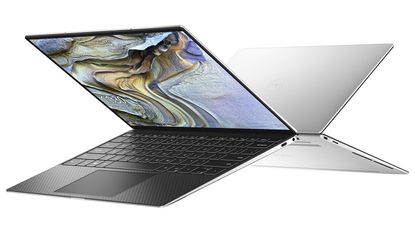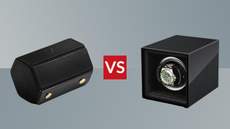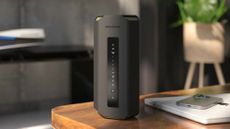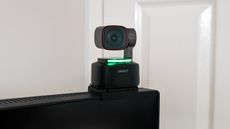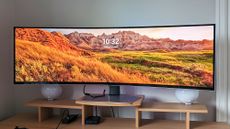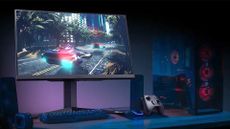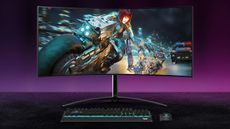The best Dell laptops offer a winning blend of power, build quality and value: from budget bargains to highly specced gaming PCs and mobile workstations, there’s a Dell for every kind of user and every kind of budget.
We think that the new Dell XPS 13 (2020) – sorry about the bulky name, but the previous XPS 13 is still on sale – is the best Dell laptop for most people, but at around £1,300 it’s quite a lot of money for an everyday laptop.
We’re also big fans of the Inspiron range of budget and mid-range Dells, and as you move up the range the newly refreshed Inspiron 13 5000 can deliver some pretty impressive specs for considerably less cash than its undeniably excellent sibling.
In 2022, slightly older laptops can make excellent purchases as they tend to deliver really good, modern performance but don't come with a 'new product' premium. You can save money and get a great product for your needs if you shop smart.
Let’s discover the key differences and what you might have to sacrifice to save some money.
- These are the best laptops money can buy
- All the best Chromebooks in one place
While the Dell XPS 13 is up at the premium end of the market, and the Inspiron is pitched more as a budget choice, they both have a lot of reasons to recommend them and have proved very popular with discerning buyers – which is why we're putting them head to head here. The difference between the most expensive Inspiron and the cheapest XPS isn't dramatic in terms of specification, but the price difference is huge.
Whether you want to know about the size of these laptops, or the sort of software they're running, or how good the respective screens are, we've got you covered. Read on for the full lowdown on how the New Dell XPS 13 and the New Dell Inspiron 13 5000 compare to each other.
Dell XPS 13 (2020) vs Dell Inspiron 13 5000: design and screen
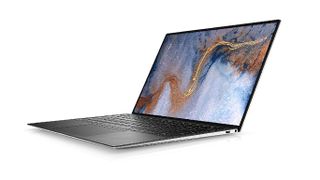
The Dell XPS 13.
The New Dell XPS 13 (2020) is a good-looking thing with a platinum silver aluminium exterior and a black interior. Its display is a 13.4” FHD+ (1,920 x 1,200) InfinityEdge display, and you can configure it with a UHD+ touchscreen display running 3,840 x 2,400. Both panels deliver 500 nits of brightness. The hinge is clever, lifting the laptop body slightly off the desk for better ventilation.
In its standard configuration the New XPS 13 weighs 1.2kg, rising to 1.27kg if you go for the touchscreen option. It’s 295mm wide, 198mm deep and 14.8mm thick.
The New Inspiron 13 5000 looks very like the XPS and has the same clever hinge, although it lacks the black interior colour of its sibling so the keyboard backlighting is less effective and there’s more plastic if you look closely. Its display is a 13.3-inch FHD display delivering 1,920 x 1,820 pixels, and it delivers 300 nits of brightness. It’s noticeably dimmer than the XPS or rivals such as Apple’s MacBook Air.
The Inspiron 13 5000 is 305mm wide, 203mm deep and 15.85mm thick and it weighs between 1.08kg and 1.23kg.
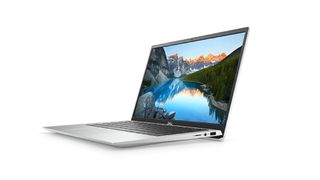
The Dell Inspiron 13 5000.
- We've got the best cheap laptops for you
Dell XPS 13 (2020) vs Dell Inspiron 13 5000: specs and performance

Dell's XPS 13 is also available as a 2-in-1 laptop/tablet hybrid.
The XPS 13 is available with three different processors, all 11th generation Core processors: the i5-1135G7 with 8MB cache and up to 4.2GHz; the i7-1185G7 with 12MB and 4.8GHz; and the i7-1165G7 with 12MB and 4.7GHz. RAM is 8GB or 16GB and you have a choice of 512GB and 1TB M.2 PCIe NVMe solid state drives. Graphics are Intel Iris Xe.
The new Inspiron is available with the 11th generation Intel Core i5-1135G7 or the Core i7-1165G7. Our pick is that latter one, which comes with 8GB of RAM, a NVIDIA GeForce MX350 with 2GB of memory and a 512GB PCIe NVMe solid state drive.
The XPS 13 has two Thunderbolt 4 ports, a microSD card slot and a headset mic/headphone port. Wireless is Wi-Fi 6 (802.11ax) with Bluetooth 5.1.
The Inspiron’s wireless connectivity is 802.11ac Wi-Fi and Bluetooth (the version isn’t specified) and there’s one USB 3.2 Gen 1, one USB 3.2 Gen 2 and one USB 3.2 Gen 2 Type C port with DisplayPort and Power Delivery. The Inspiron also has a micro SD card reader and an audio jack.
When you compare the most expensive Inspiron 13 5000 with the base XPS, which costs more, you’re getting a better processor and a better GPU, more useful ports and a higher resolution display. However, you can’t spec it with a UHD+ touchscreen or a 1TB SSD and you don’t get Wi-Fi 6.
- Check out the best lightweight laptops
Dell XPS 13 (2020) vs Dell Inspiron 13 5000: price and verdict

The Dell XPS 13.
The New XPS 13 starts at £1,349. The New Inspiron 13 5000 is being heavily discounted at the moment and starts at £669 for a Core i5 model. The specification we’re looking at here, the Core i7, is the most expensive model at £849 – so it’s a good £500 less than the XPS 13.
What Dell has done with the Inspiron 13 design is very clever: thanks to strategic use of aluminium the New Inspiron looks very like the premium XPS. But when you look at it closely you'll see that it's not quite as premium as the XPS 13, and the display is visibly poorer. Dell calls it a WVA display, which is short for Wide Viewing Angle: it's a budget panel Dell uses in its cheaper models. It's not a bad display by any means, but while you can bring the Inspiron up to the same or better specification as the entry-level XPS 13, you can't do the same with its screen. If you tend to work or study in fairly bright outdoor environments, the XPS display will do a much better job.
If that's not a deal-breaker, though, the New Inspiron 13 5000 can come very close to the XPS 13 for a lot less cash: it's an excellent choice for a straightforward home, work or student laptop.
- We've listed the best student laptops
